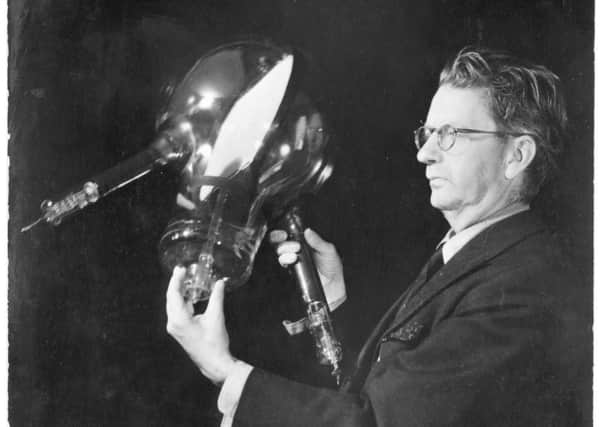Logie Baird’s 1927 video recording ‘coming home’


Now a shellac disc, the world’s oldest surviving transmission recording made by the Scots television pioneer, has been saved by the University of Glasgow.
The phonovision shellac disc, dating back to 20 September, 1927, is the world’s oldest surviving 78rpm video recording.
Advertisement
Hide AdThe collection, which also includes the log books used by Benjamin Clapp while conducting Logie Baird’s transatlantic television trials and the world’s first known use of the acronym TV, was put up for sale in April and looked almost certain to go to a private collector overseas.
But a temporary export bar was placed on its sale until today and the University of Glasgow has confirmed it is in the process of buying the collection.
The purchase is being made possible with the financial support of an anonymous local businessman who lived for 20 years in Logie Baird’s home town of Helensburgh, Dunbartonshire. He chose to help with the acquisition in order to keep the collection in the UK.
The anonymous benefactor said: “I am delighted the collection has been saved and is now coming home. It charts such an important period of modern engineering history so I felt it could not, and should not, leave these shores to move abroad. It needs to be shared for future generations.” He added: “John Logie Baird was a Helensburgh man and a Scottish pioneer who helped change the world, and, with his ties to the University of Glasgow, I think it is only right and proper that this important collection should be coming to the university and hopefully it will help inspire future pioneering engineers.”
Recorded by Logie Baird during his early experimental trials using mechanical scanning, the phonovision disc was not actually transmitted until the following year, 1928, marking one of his earliest television broadcasts.
Logie Baird was a student at the University of Glasgow in 1914-1915 and he studied engineering. However, he cut short his studies when he tried to voluntarily sign up for war duties in 1915, but was turned down on health grounds.
Advertisement
Hide AdProfessor Anton Muscatelli, principal of the University of Glasgow, said: “I am delighted that this important, historical collection will be coming to the university, greatly enriching the collection already owned by the university.
“We’re proud of the fact that John Logie Baird is an alumnus of the University of Glasgow and so it is fitting and immensely exciting that these important items, which catalogue the world-changing work he was conducting at the time of his engineering breakthrough, are preserved here in Scotland and at the university where he studied.”